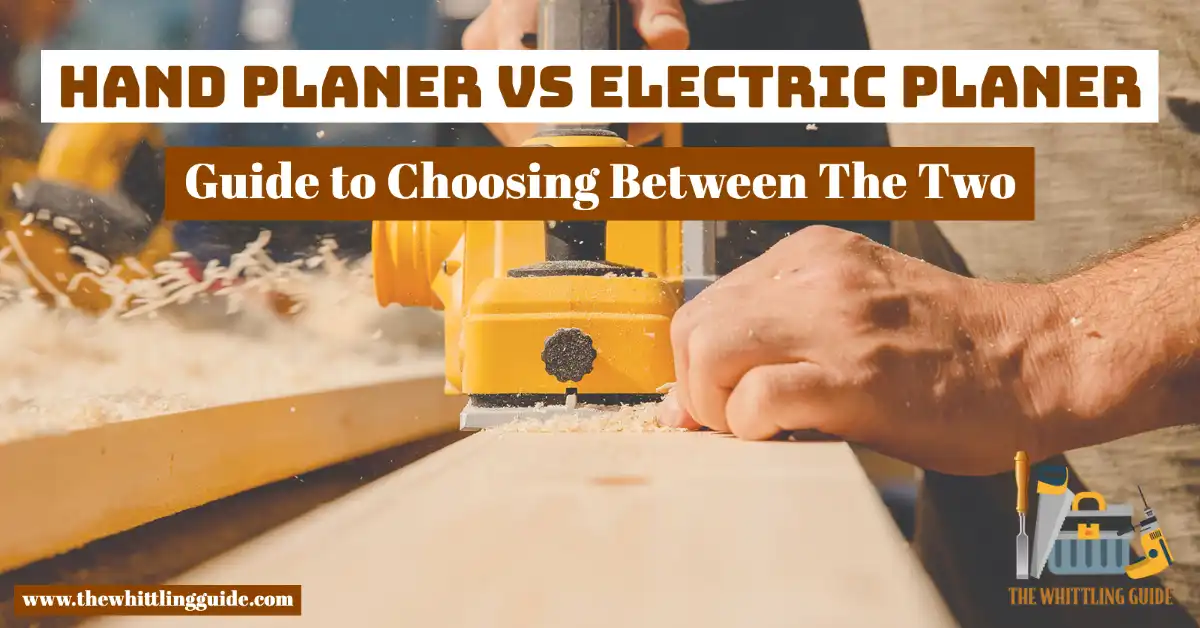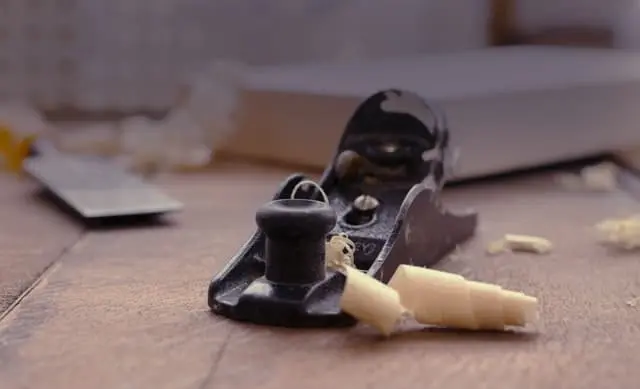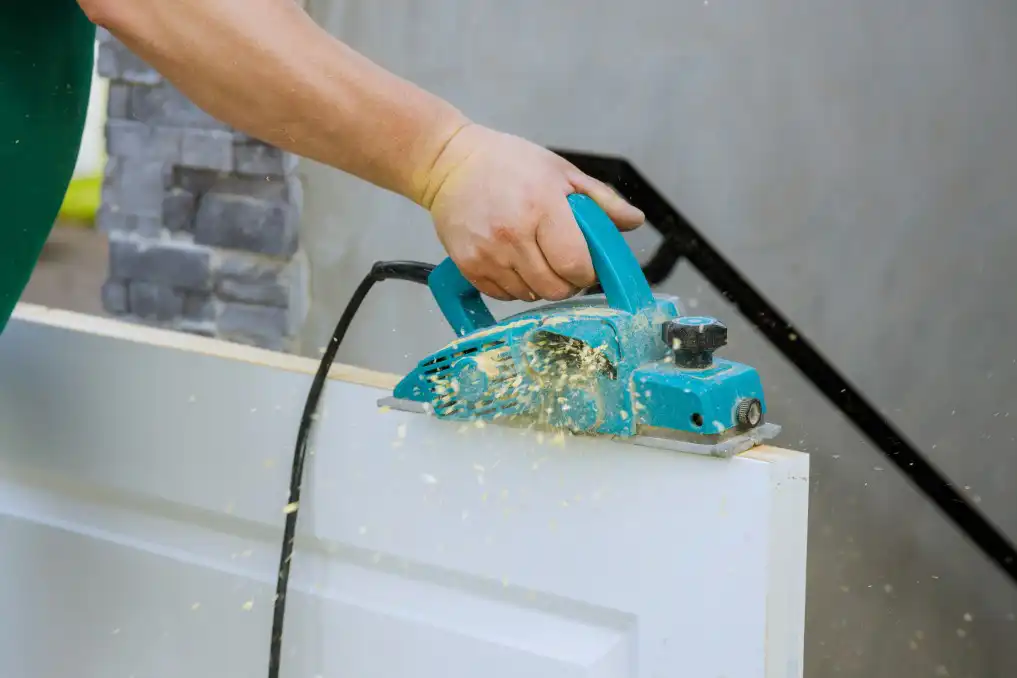
If you’re wondering whether to buy a hand planer or an electric planer, you can consider a few things. Hand planers are less expensive, but they require more effort to use. Electric planers are more expensive, but they’re also easier to use. From a functional standpoint, they do the same thing. Choosing between a hand planer vs electric planer requires knowledge of what each tool offers. You need to look at the features and match them to your preferences. Here’s a closer look at the pros and cons of each type of planer.
Hand planer vs Electric Planer
Hand planer Overview
A hand planer is a woodworking tool that smooths wood surfaces by removing small amounts of material. The operator uses both hands to shave the wood with the attached steel blade manually. The blade is so thin that it flattens the edges and corners of the wood. It also smooths out frames. Hand planers are also used to create decorative effects, such as increasing the grain or changing the shape of the edge.
When using it, grab the knob with one hand and the handle with another. That gives you the grip and steadiness needed to drive it seamlessly across woods. You can also adjust how deep the hand planer steel blade cuts through the knob.
The hand planer is portable, allowing it to fit into a small toolbox. There are two hand planers: a manual hand planer and an electric hand planer.

Use a hand planer to achieve a smoother wood surface, trim off swollen corners of a stuck door for smaller wood pieces with heightened accuracy, make radius cuts, create a symmetrical slope plane, and work on parallel wooden surfaces such as tables and doors or frames. One of its advantages is its portability and ability to work with no electricity or installation.
Pros
- Ease of use
- Portable
- The manual version works anywhere
- No installation needed
Cons
- A wrong move results in injuries and accidents
- Requires physical labor
Features
Blade
Always keep the blade sharp so that the planer cuts. It does not matter if it is still new. It has to be razor-sharp before you put it to use. You do not need more tools and a flexible budget for the edge. Planer blades act much like the blade of a shaving razor, scraping off uniform layers of wood (About mechanics.com).
Amongst your tools is a sharpening stone or sandpaper. You only need practice holding the iron steady at a 25- to 30-degree angle without rocking it, maintaining firm, downward pressure right over the bevel.
Sharpen first on a wet medium-grit water or oil stone or 220-grit wet/dry sandpaper placed on a dead-flat surface, such as glass. Stroke with a circular motion until you feel a burr on the back of the edge, then flip the iron over to remove the burr by rubbing the back flat on the stone. Repeat the process on a fine stone or finer-grit sandpaper.
Depth Adjustment Wheel
It adjusts the projection of the iron, which affects the depth of cut and the amount of material removed. Turning it clockwise increases the cutting depth; turning it counterclockwise reduces the depth.
Lever Cap Screw
Turning the depth adjustment wheel becomes easy. It holds the blade/chip breaker assembly to the frog. Make sure it is tight enough that the blade remains sturdy during use. When not sure, start with less pressure than you think is necessary and increase it only if you see the blade shifting during use.
Electric planer Overview
An electric planer is also known as a power planer or surface planner. It is a woodworking tool that creates a smooth, level surface on a piece of lumber. The electric planer has a rotating blade that shaves off small pieces of wood as it moves along the surface.
The electric planer is powered by electricity and does not require manual labor. It is a handheld tool that is easy to use. The electric planer is available in different sizes and can be used for different purposes.
It comes with two or three blades and can remove up to ⅛ inch of wood in one pass. What makes it distinctive is portability.

The best electric hand planers are generally handy and lightweight. It can be used in different environments, provided with a power source. You can use this tool in several places where the bench planer may not be possible.
Unlike the table planer, you pass the tool over the workpiece with a hand planer, where you have to push the workpiece through the machine. That also means that the electric hand planer is for trimming small wood pieces and minor correction projects.
Pros
- Portable
- Faster
- Versatility
- Ideal for small pieces.
Cons
- More expensive than the hand planer
- Can be loud
Features
Adjusting the depth of cut
Depth of Cut is the thickness of metal removed in one cut and is measured by perpendicular distance among the machined with no machined surface expressed in mm (4mechtech). You can adjust the depth of the cut by turning the knob on the front of the tool. Check that the pointer is set to the desired depth of cut.
Planer blades
To install the blades, loosely attach the adjusting plate to the set plate with the pan head screws and set the mini planer blade on the gauge base so that the blade’s cutting edge is flush with the inside flank of the gauge plate.
Set the adjusting plate on the gauge base so that the planer blade locating lugs on the set plate rest in the mini planer blade groove, then press in the heel of the adjusting plate flush with the backside of the gauge base, and tighten the pan head screws. The blade will be positioned by the planer blade locating lugs on the set plate. The blade must be mounted so that the cutting edge is level, parallel to the rear base’s surface.
Dust collection
Attach the dust bag to the chip discharge opening. The chip discharge opening is tapered. When attaching the dust bag, push it onto the chip discharge opening as it prevents it from coming off during operation. When the dust bag is about half full, remove the dust bag from the tool and pull the fastener out.
What could be better?
Hand planer
- Manual work requires more effort and high accuracy. Due to its portability, you can easily have accidents of any unintended moves. More weight on the planer could have been easier to work with.
- It could have been a bit advanced.
Electric planer
- It could have been more affordable.
- It could have been more effective for carving and cutting intricate details.
Similar Features
- Both are powerful tools.
- They are portable.
- Both are for material removal.
Key Differences
- Electric planers are faster than hand planers. A hand planer requires pressure from the hands, while an electric planer does not need effort but power.
- Electric planers have multiple accessories and features, unlike manual planer.
- An electric planer is faster in operation than a hand planer since it is machine-controlled.
- Electric planers come with a depth adjustment gauge that enables you to choose your desired thickness, which is difficult on hand planers since you have to gauge and measure everything manually.
The verdict
The hand planer is for precision on smaller woodwork. The hand planers are a good start if you are on a low budget and want to explore the woodworking world. Without much experience, you can make good use of the electric planer. The hand planer is ideal if your project revolves around smaller wood with extensive details. A hand planer is portable and for maintenance and site work. It would be best to use an electric planer if working with rough edges because it has the speed and capacity for material removal. Identifying both tools should not be a problem. Go for one that would help your work.
- Grain and Sheen: Teak Oil versus Danish Oil Uncovered - January 10, 2024
- The Cherry on Top: Crafting the Perfect Cutting Board - January 9, 2024
- Polyurethane Water-Based vs Oil-Based: Choosing the Right Finish - January 8, 2024